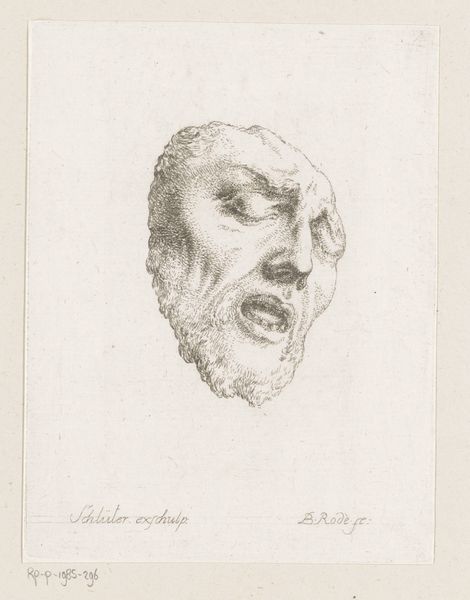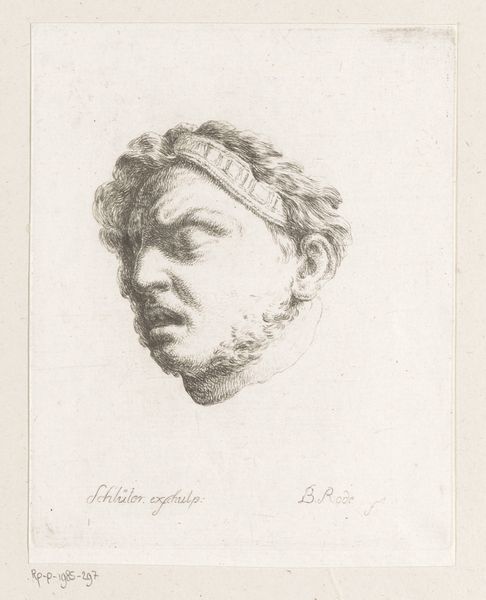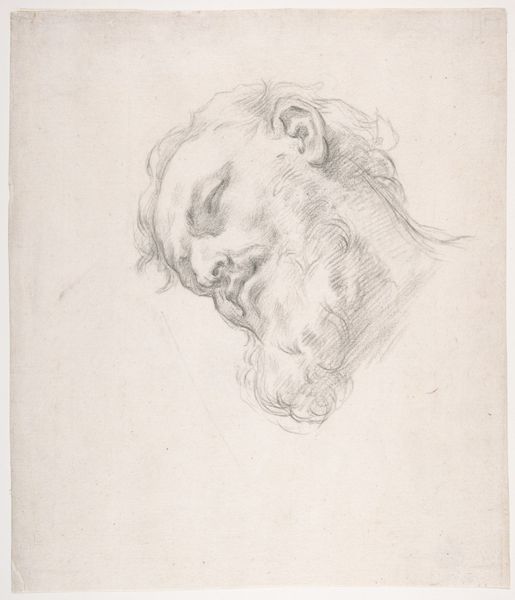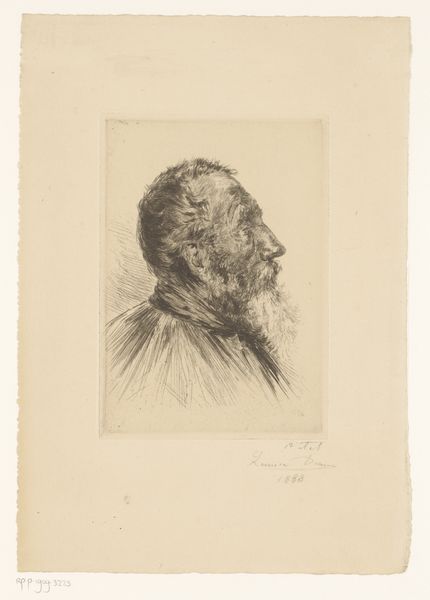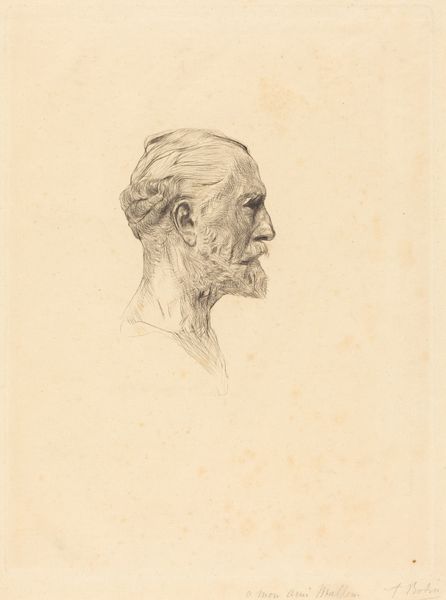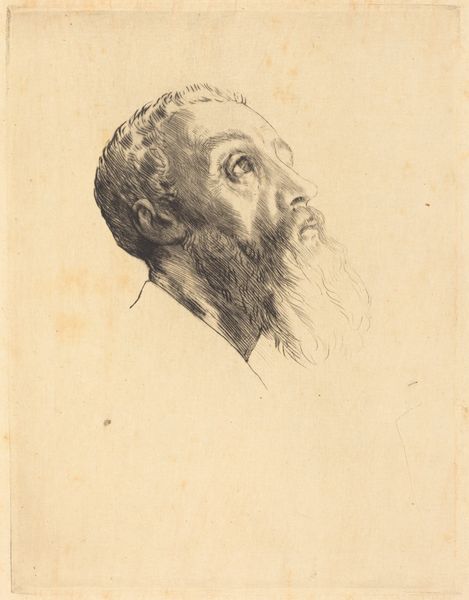
drawing, pen
#
portrait
#
pencil drawn
#
drawing
#
amateur sketch
#
light pencil work
#
baroque
#
face
#
pencil sketch
#
charcoal drawing
#
figuration
#
form
#
portrait reference
#
pencil drawing
#
line
#
pen
#
portrait drawing
#
pencil work
#
tonal art
#
realism
Dimensions: height 144 mm, width 112 mm
Copyright: Rijks Museum: Open Domain
Christian Bernhard Rode created this etching of a man’s head with closed eyes sometime in the 18th century. This print is not simply a portrait but is an exercise in physiognomy, or the study of facial features to determine character. This interest in the face developed during the Enlightenment, when thinkers sought to classify human types based on external characteristics. Rode was active in Berlin, which became a center for Enlightenment thought under Frederick the Great. The print’s inscription, “Schüler Exerzitium,” suggests that this work may have been an exercise for Rode's students, intended to teach them to capture a range of emotions. As historians, we look to period texts, like Johann Caspar Lavater’s “Essays on Physiognomy,” to understand the cultural context of such images. This print reveals the intersection of art, science, and education during the Enlightenment, reflecting the era’s drive to understand and categorize the human experience.
Comments
No comments
Be the first to comment and join the conversation on the ultimate creative platform.
